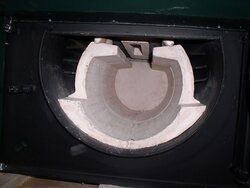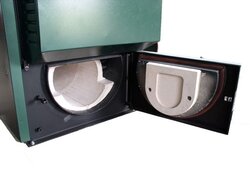I was looking at the picture of the BioMax on the New Horizon website, and I can't figure out how the gas exits the gasification chamber. I'm also wondering about ash accumulation. That's a lot smaller ash reservoir than I have on my EKO. I'm wondering how often you have to clean out the ashes.
I know Rob Reinhart has a BioMax and I think one other member as well. Any other observations on how this thing works?
I know Rob Reinhart has a BioMax and I think one other member as well. Any other observations on how this thing works?



